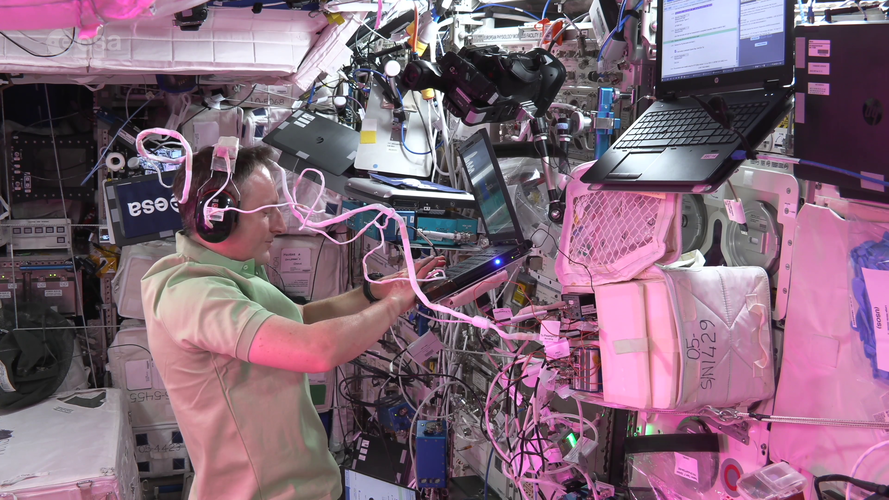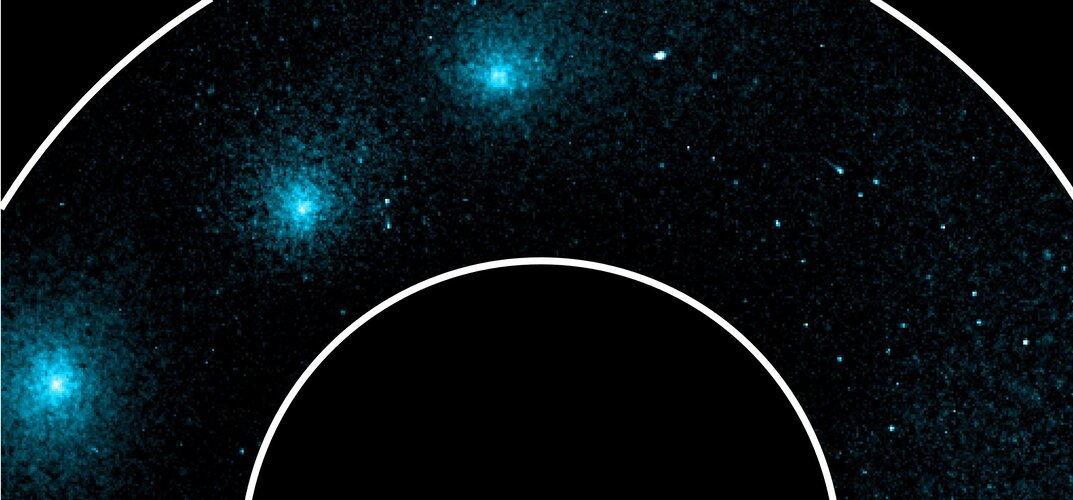
Copernical Team
Five Space Station Research Results Contributing to Deep Space Exploration
 More than 3,000 experiments have been conducted aboard the International Space Station during the 21 years humans have been living and working in space. These experiments have provided insights helping improve life back on Earth and explore farther into the solar system. Researchers have shared these results in thousands of scientific publications.
Over the past few months, scientists shar
More than 3,000 experiments have been conducted aboard the International Space Station during the 21 years humans have been living and working in space. These experiments have provided insights helping improve life back on Earth and explore farther into the solar system. Researchers have shared these results in thousands of scientific publications.
Over the past few months, scientists shar SpaceX to crash Falcon 9 rocket into Moon
 SpaceX launched its first deep-space mission in February 2015. The uncrewed Falcon 9 transported the refrigerator-sized Deep Space Climate Observatory into the void. However, because it doesn't have enough fuel to return to Earth and land on a floating platform as planned, the rocket will instead be ploughed into the Moon.
In a first, a Space X rocket that has been navigating deep space si
SpaceX launched its first deep-space mission in February 2015. The uncrewed Falcon 9 transported the refrigerator-sized Deep Space Climate Observatory into the void. However, because it doesn't have enough fuel to return to Earth and land on a floating platform as planned, the rocket will instead be ploughed into the Moon.
In a first, a Space X rocket that has been navigating deep space si China tests new engine, 'likely to power hypersonic aircraft'
 China on Monday conducted a test flight for a new engine that experts said could power China's future hypersonic aircraft and near-space plane.
The engine, developed by the Laboratory of Spray Combustion and Propulsion under School of Aerospace Engineering at Tsinghua University, successfully conducted a flight test on Monday morning, China Central Television (CCTV) reported.
A two
China on Monday conducted a test flight for a new engine that experts said could power China's future hypersonic aircraft and near-space plane.
The engine, developed by the Laboratory of Spray Combustion and Propulsion under School of Aerospace Engineering at Tsinghua University, successfully conducted a flight test on Monday morning, China Central Television (CCTV) reported.
A two Warpspace wins JAXA contract to design Optical Cislunar Communication Architecture for Lunar mission
 Warpspace Co., Ltd., a spin-out space startup from the University of Tsukuba, an optical inter-satellite communication service provider, announced that it has been selected to conduct a study on space communication for the lunar exploration by JAXA, which could be a part of the Artemis plan. Warpspace develops "WarpHub InterSat," the optical inter-satellite data relay communication service for t
Warpspace Co., Ltd., a spin-out space startup from the University of Tsukuba, an optical inter-satellite communication service provider, announced that it has been selected to conduct a study on space communication for the lunar exploration by JAXA, which could be a part of the Artemis plan. Warpspace develops "WarpHub InterSat," the optical inter-satellite data relay communication service for t EU launches 'game changer' space startup fund

The EU launched Tuesday a billion-euro fund to support startups in the space sector with the hope it will be a "game changer" and attract private investors into the key sector.
Named the Cassini fund after the 17th century Italian astronomer, it was launched as part of the European Investment Fund (EIF) which provides risk financing to small and medium-sized businesses across Europe.
"Many of our startups cannot get sizeable equity investment in the EU once they need to scale up," said Thierry Breton, the EU's internal market commissioner, at a gathering for the European space industry in Brussels.
He said the firms are thus forced to turn to non-EU investors.
"This is a major loss for Europe. The Cassini Fund will be a game changer," he added.
The head of the EIF, Alain Godard, said that each euro the fund invests typically attracts three or four euros of private investment from firms that otherwise would have found the project too risky.
A complementary mechanism will provide access to lending to space startups.
The European space sector is estimated to account for about 10 percent of the overall economy, and is expected to see its revenues double over the coming decade.
Astronaut hearing test | Cosmic Kiss
 Video:
00:02:14
Video:
00:02:14
The International Space Station can be a noisy place. ESA astronaut Matthias Maurer is putting his hearing (and headphone untangling skills) to the test in an experiment called Acoustic Diagnostics.
Acoustic Diagnostics is an Italian Space Agency (ASI) experiment, developed in cooperation with the University of Rome Tor Vergata, to study the effects of microgravity on the hearing of astronauts. The study began during ESA astronaut Luca Parmitano’s mission and monitors what are known as optoacoustic emissions (OAEs).
OAEs are caused when hairs in the inner ear move in response to auditory stimulation. That means the measurement is passive.
Solar Orbiter catches a second comet by the tail

For the second time in its mission so far, the ESA/NASA Solar Orbiter spacecraft has flown through the tail of a comet. Predicted in advance by astronomers at University College London, UK, the spacecraft collected a wealth of science data that now awaits full analysis.
The beauty of the Sun seen from space
 Image:
The beauty of the Sun seen from space
Image:
The beauty of the Sun seen from space Sols 3362-3363: Sedimentologist's Delight
 After a few sols of challenges that prevented us from getting close-up MAHLI imaging of this dark outcrop in front of us, today we were finally able to plan the contact science that we were hoping for.
Yesterday there was a small rock under the right rear rover wheel, so we had to kick that rock to the curb to get into a stable position for using the rover arm. This morning's downlink data
After a few sols of challenges that prevented us from getting close-up MAHLI imaging of this dark outcrop in front of us, today we were finally able to plan the contact science that we were hoping for.
Yesterday there was a small rock under the right rear rover wheel, so we had to kick that rock to the curb to get into a stable position for using the rover arm. This morning's downlink data 
 Image:
On the pull
Image:
On the pull